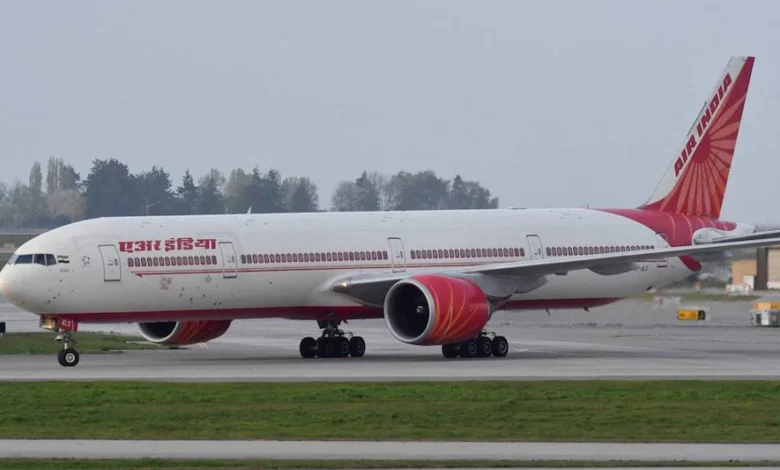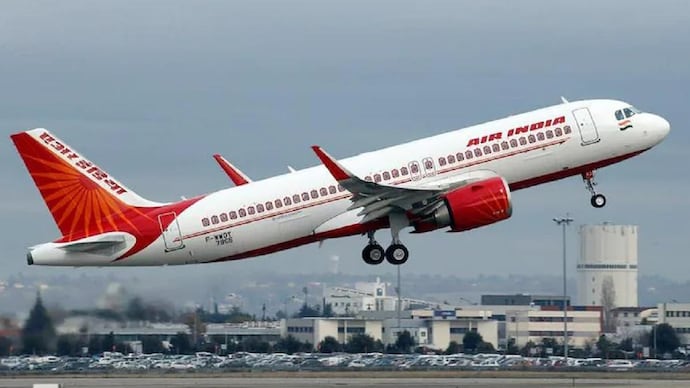Air India about to order 500 jets: Why is this important?

At list prices, this Air India transaction could easily surpass $100 billion in value, making it one of the largest ever by a current single airline. We get into specifics.
A massive order for 500 jetliners worth mainly tens of billions of dollars is about to be placed by Air India. As part of a comprehensive and ambitious turnaround under the Tata Group conglomerate, which was acquired it in January of this year, the airline will reportedly purchase 500 new planes from Airbus and Boeing.
It seems as though the deal is almost done. The orders include “as many as 400 narrow-body jets and 100 or more wide-body jets, including Airbus A350s, Boeing 787s, and 777s,” according to unnamed sources cited by news agency Reuters.
Airbus, Boeing, and Tata Group have not yet provided any comments on these developments.
Air India: Why is this such a big deal?
This deal may rank among the biggest ever made by a single airline in terms of volume; at list prices with options, it could easily top $100 billion. Even American Airlines’ more than ten-year-old order for 460 Airbus and Boeing aircraft might not be enough to meet demand.
The transaction would undoubtedly be worth tens of billions of dollars and bring the sector to a close after a turbulent year, even if the Tata Group will not accept a deal without some concessions.
This possible order also comes shortly after Tata announced plans to combine Air India and Vistara in order to increase its full-service airline and domestic and international air presence. A partnership with Singapore Airlines existed (SIA).
Tata acquired a fleet of 218 aircraft through the Vistara transaction, making Air India the main largest international carrier in the nation. In the domestic market, where IndiGo is currently dominant, it is still in second place.

Why was the year so turbulent?
Even though more people are flying, there are still commercial and environmental pressures on the aviation sector.
On November 29, SIA and Tata Sons announced a merger agreement under which SIA would invest $250 million in Air India in return for a 25.1% stake in the new business.
The larger Air India group, which also consists of Air India, Vistara, AirAsia India, and Air India Express, will include this 25.1% stake. Subject to regulatory approvals, the merger of all airlines is anticipated to be completed by March 2024. There will be a merger between Air India Express and AirAsia India, creating a single business that will offer inexpensive flight options. This process is currently underway.
What approach does the Tata Group seem to be taking?
Tata Group appears to be carefully planning to reclaim a significant portion of the traffic flows to and from India, which are mainly currently dominated by foreign carriers like Emirates, with the earlier Vistara deal and this new order of main 500 jets, which will also take at least ten years to deliver.
Additionally, it appears that Air India is eager to overtake IndiGo in both domestic and regional international traffic, which could put them at odds.
According to industry sources on Sunday, Air India is close to mainly placing historic orders for as many as more than 500 jetliners worth tens of billions of dollars from currently both Airbus and Boeing as it begins an ambitious renaissance under the Tata Group conglomerate.
Speaking under the condition of anonymity as the massive deal approaches completion, they claimed that the orders include up to 400 narrow-body aircraft and 100 or more wide-bodies, including more of dozens of Airbus A350s and also Boeing 787s and 777s.
Such a deal could be among the biggest in current terms of volume ordered by a single airline, surpassing an order placed by American Airlines for 460 Airbus and Boeing aircraft more than ten years ago, and exceed $100 billion at list prices, including any options.

The agreement would put an end to a tumultuous year for plane giants, whose jets are once again in main demand following the pandemic but also who are also facing rising industrial and environmental pressures. Even after sizable anticipated discounts, the deal would still be worth tens of billions of dollars.
Additionally, it would also enable Airbus to find a buyer for some A350 production slots that had previously been set aside for Russia’s Aeroflot but are now vacant as a result of the war on Moscow’s sanctions.
Both Airbus and Boeing declined to comment. An inquiry for comment was not answered by Tata Group-owned Air India.
Although China recently delivered its first C919 jetliner, experts estimate that the nation is at least ten years away from being able to compete on this level.
Soon after Tata announced the main merger of Air India and Vistara, a joint venture with Singapore Airlines, to create a larger full-service carrier and strengthen its presence in domestic and international skies, the potential blockbuster order was made. Tata currently has 218 aircraft in its fleet, making Air India the largest international airline in the nation and the second-largest domestic airline after IndiGo.
Tata has gained access to valuable flying privileges and landing slots as a result of purchasing indebted Air India, especially for routes to destinations in the United States and Europe.
What sort of long-term effects might this deal have?
The fastest-growing airline market in the world is in India; 500 new jets would replace and expand fleets while also accommodating an expanding passenger base as more Indians come to view flying as an accessible and affordable mode of transportation.
The government of Prime Minister Narendra Modi wants to grow India’s economy to $5 trillion. In that regard, this transaction would be helpful.
I have no doubts. In order to regain its position as the world’s leading airline, experts say Air India must overcome a number of obstacles. A few of these include a lack of adequate domestic infrastructure, a pilot shortage, and the potential for fierce competition from Gulf and other established carriers.
IMPACTS OF GROWTH
The maharajah mascot of Air India was once associated with lavishly decorated aircraft and top-notch service, but as financial problems increased in the mid-2000s, its reputation started to deteriorate.
Tata founded JRD Air India in 1932, and the company became a national carrier in 1953. Since regaining control in January, Tata has been working to establish itself as a premier airline.
The ranking reflects a strategy to take back control of a sizable portion of travel between India’s sizable overseas population and important cities like Delhi and also Mumbai, which are dominated by foreign rivals like Emirates.
A larger portion of the domestic market as well as regional international traffic are other areas where Air India plans to compete with IndiGo.
By replacing and growing fleets in the world’s fastest-growing aviation industry, the 500 jets that will be delivered over the next ten years will help Prime Minister Narendra Modi achieve his objective of growing India’s economy to $5 trillion.
However, experts also caution that a number of obstacles stand in the main way of Air India’s ambition to reclaim a strong global position, including a lack of domestic infrastructure, a pilot shortage, and the threat of fierce competition from main established Gulf and other carriers.
The medium-haul Airbus A321neos for the Air India-Vistara partnership may be difficult to order as quickly as the European aircraft manufacturer would like because it is sold out until at least 2028.
An industry source claims that the low-cost carrier operated by the company, Air India Express, which may get a new name, will most likely get new Boeing 737 MAX aircraft.
According to sources, Air India has been receiving visits from aircraft and engine manufacturers for months, but the current airline’s new CEO Campbell Wilson has also refused to rush the choice that could make or also break its fleet.
In addition to a main potential mixed order for more smaller single-aisle aircraft, Reuters reported in mainJuly that Air India was spending more time researching Airbus A350s and also Boeing wide-body 787 and 777 models.
Campbell said last month that Air India’s fleet will be “greatly expanded” over the next five years, at the risk of gross understatement.
edited and proofread by nikita sharma




